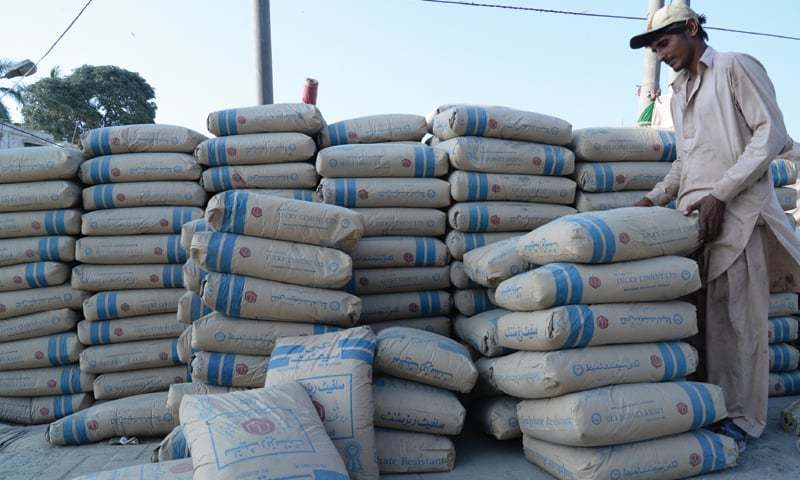Cement, a crucial component in building, shapes a nation’s infrastructure and advancement. As a result of the country’s rapidly growing economy and population, cement prices in Pakistan have experienced substantial fluctuations throughout the years. In 2023, Pakistan’s cement business was complicated and dynamic, influenced by a multitude of economic variables and supply-and-demand dynamics. Let’s read below “Cement Price in Pakistan Today”.
Current Trends in Cement Price in Pakistan
As of November 2023, 50 kilograms of cement in Pakistan will set you back around 1,200 Pakistani rupees. A bag cost around PKR 1,000 in the beginning of the year, thus there has been a considerable increase in price. The recent spike in cement prices is attributable to multiple factors, including:
- The cost of cement’s primary raw ingredient, clinker, as well as coal, has risen dramatically in recent months due to rising input prices. The rising cost of raw materials has an immediate impact on cement manufacturers, who have seen their production expenses rise and cement prices rise as a result.
- Cement transportation delays and shortages caused by ongoing disruptions in the global supply chain have added to the already high prices of cement. Cement manufacturers and, ultimately, consumers, have felt the pinch as transportation prices have risen due to these disruptions.
- Cement has been in short supply in Pakistan due to the country’s high demand, which has been fueled by ongoing infrastructure projects and private construction activity. Cement prices have risen due to a supply-demand mismatch, since output has not kept pace with increasing demand.
Components Influencing Cement Prices
Aside from the more apparent ones, there are a lot of basic economic factors that impact cement pricing in Pakistan. A few instances include:
- The demand for cement is proportional to the national GDP growth rate. As the economy grows, cement prices rise because more construction projects require the material.
- Cement prices are indirectly affected by monetary policy variables such as interest rates, inflation, and currency exchange rates. For instance, if rising interest rates discourage investment and thus decrease demand for cement, the price of the commodity could level out.
- Government initiatives and investments in infrastructure projects have a significant impact on cement consumption. Massive infrastructure projects, such as roads, bridges, and power plants, rely on cement, an expensive but necessary building ingredient.
- The features of international trade also have an effect on Pakistan’s cement industry. Cement exports and imports could have an effect on house prices. For example, if cement imports were to rise, there would likely be an oversupply of the material and prices would remain unchanged.
Consequences of Cement Price Fluctuations
Cement price swings affect a wide range of individuals and companies, not only those in the construction sector. These effects include:
- The construction industry is quite sensitive to changes in the cost of cement. Due to potential delays or cost overruns, the overall cost of construction projects can increase if cement costs are high.
- Those doing their own home improvement or construction projects are particularly vulnerable to fluctuations in the cost of cement. The rising cost of cement has a chilling effect on construction projects and is putting a strain on household budgets.
- Companies and individuals all around the nation can feel the effects of changes in cement prices, for instance. Like other construction materials, cement can cause prices to rise, which affects people’s capacity to afford housing and other essentials.
Looking Ahead to the Future of the Cement Market
Cement price forecasts in Pakistan are sensitive to a number of variables, including macroeconomic conditions, regulatory frameworks, and supply chain dynamics. Several tendencies suggest that cement price increases will continue for some time.
In Pakistan, cement demand is expected to continue rising due to ongoing infrastructural expansions, population growth, and urbanization.
Supply constraints, such as the need to acquire additional land and adhere to environmental regulations, could make it challenging to grow cement manufacturing capacity. Possible results include supply constraints and subsequent sustained price hikes.
Input Costs: If the prices of the key raw materials used to create cement remain unpredictable, cement prices could go up much more.
Cement Price Volatility: How to Resolve It
A variety of steps that would stabilize cement prices could be taken to safeguard consumer and industry interests:
The government can help maintain stable prices and meet rising demand by encouraging and facilitating the increase of cement manufacturing capacity.
For supply chain management to be effective, transportation and logistics systems must be improved. Therefore, less transportation expenses and fewer interruptions in the supply chain will impact cement pricing.
Government oversight of market trends and thorough regulation of the industry can deter cement companies from engaging in unfair pricing practices.
Conclusion
The cement business plays a crucial role in Pakistan’s economic progress. Everyone with a stake in the construction industry or the economy needs to know how much cement costs and what factors influence those costs. By proactively addressing the issue of cement price volatility, Pakistan can ensure a robust cement market that contributes to the funding of infrastructure development and affordable housing. I hope you like reading “Cement Price in Pakistan Today”.
